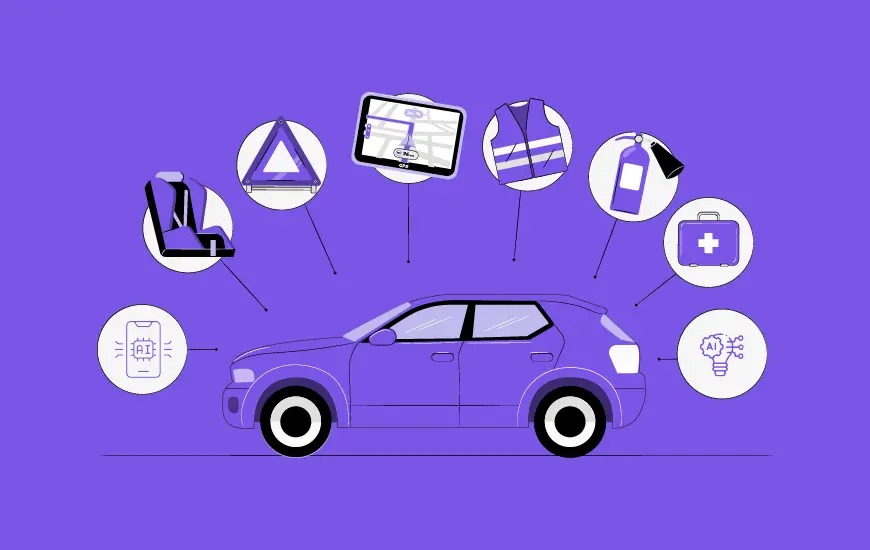In recent years, autonomous vehicle technology has progressed by leaps and bounds, promising to revolutionize the way we think about transportation. As we enter a new era of mobility, it’s essential to explore the emerging trends and innovations driving this transformative industry.
The Evolution of Autonomous Vehicles
1. Levels of Autonomy: Autonomous vehicles are categorized into levels ranging from Level 0 (no automation) to Level 5 (full automation). We’re seeing a shift towards higher levels of autonomy, with Level 3 and Level 4 vehicles becoming more prevalent.
2. Connectivity: Connectivity is a key trend, enabling vehicles to communicate with each other (V2V) and with infrastructure (V2I). This connectivity enhances safety and traffic management.
3. Data-Driven Decision-Making: Vehicles are equipped with advanced sensors and AI algorithms that enable real-time data analysis for making split-second decisions, ensuring safety on the road.
Advancements in Sensor Technology
1. LiDAR Technology: Light Detection and Ranging (LiDAR) technology has become more compact and affordable, making it an essential sensor for autonomous vehicles. LiDAR provides high-resolution 3D mapping of the vehicle’s surroundings.
2. Advanced Radar Systems: Radar systems have evolved to offer enhanced object detection capabilities, even in adverse weather conditions. Multiple radar sensors cover blind spots and improve vehicle perception.
3. Camera Systems: High-resolution camera systems coupled with machine learning algorithms enable object recognition, lane detection, and traffic sign recognition.
Artificial Intelligence and Machine Learning
1. Neural Networks: Deep learning neural networks are employed for object recognition, path planning, and decision-making. These AI systems continuously learn and adapt to changing environments.
2. Simulation: AI-driven simulations allow autonomous vehicles to gain experience in virtual environments, improving their ability to handle complex, rare scenarios.
3. Edge Computing: In-vehicle edge computing systems process data locally, reducing latency and enabling faster responses to changing road conditions.
Safety and Regulatory Framework
1. Safety Standards: Regulatory bodies are developing safety standards and guidelines specific to autonomous vehicles to ensure the technology’s safe integration into existing traffic.
2. Testing and Validation: Rigorous testing procedures and simulation-based validation processes are being implemented to verify the safety and reliability of autonomous vehicles.
3. Ethical Considerations: The industry is addressing ethical questions, such as how autonomous vehicles should prioritize passengers’ safety versus pedestrians’ safety in emergency situations.
Mobility as a Service (MaaS)
1. Ride-Hailing Services: Autonomous ride-hailing services are emerging, allowing users to summon autonomous vehicles on-demand, reducing the need for personal car ownership.
2. Autonomous Shuttles: Autonomous shuttle services are being deployed in urban areas, providing convenient, eco-friendly transportation options.
3. Integration with Public Transit: Autonomous vehicles are expected to complement traditional public transit systems, offering efficient first and last-mile solutions.
Environmental Sustainability
1. Electric and Hybrid Vehicles: Many autonomous vehicles are electric or hybrid, reducing carbon emissions and contributing to a greener transportation ecosystem.
2. Efficient Routing: Autonomous vehicles can optimize routes and driving patterns to minimize energy consumption.
3. Multi-Modal Integration: Integrating autonomous vehicles with other sustainable transportation modes, such as bicycles and scooters, promotes eco-friendly mobility.
Challenges and Considerations
1. Cybersecurity: Ensuring the security of autonomous vehicles against cyber threats is a top priority, given the connectivity and data-sharing nature of these vehicles.
2. Liability and Insurance: Determining liability in the event of accidents involving autonomous vehicles remains a complex legal issue.
3. Public Acceptance: Building public trust in autonomous technology and addressing concerns about job displacement in industries like trucking and taxi services are ongoing challenges.
Future Outlook
The future of autonomous vehicle technology is promising, with potential applications in personal transportation, public transit, logistics, and beyond. As the industry continues to innovate and regulatory frameworks mature, we can expect safer, more efficient, and environmentally friendly mobility solutions to become an integral part of our daily lives. The journey towards full autonomy may have its hurdles, but the destination promises a transportation revolution that will shape the way we move in the decades to come.

